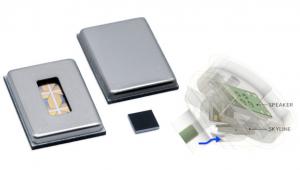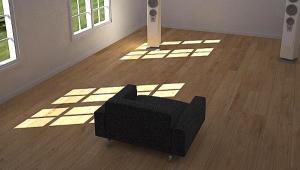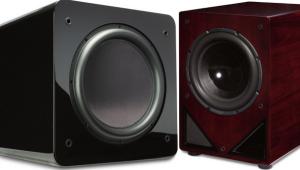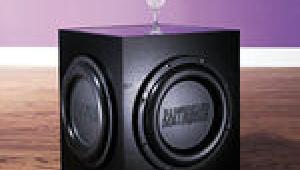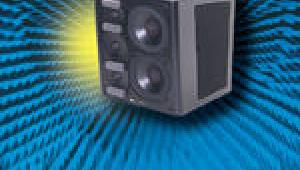Face Off: Surround-Speaker-Configuration Wars Page 5
Dipole-radiating loudspeakers offer a number of different advantages over direct-radiating loudspeakers. As THX points out, commercial cinemas use not just one but a dozen or so surround speakers for each surround channel. This array doesn't create a distinct, direct sound, even with discrete sound effects. Even though cinema speakers are monopole in nature, their high placement (combined with the size of the room and distance to the audience) allows the sound to become more diffuse than a similar array would create in a home theater. Because of the Precedence Effect, in a smaller room, anyone sitting closer to one monopole surround speaker than another would only hear the closest speaker.
A dipole speaker directs sound to the front and back of the room and creates a null (no sound) toward the listener. The viewer hears the surround effects as they're reflected from room surfaces and can't place the speaker's location. Besides creating a naturally diffuse soundfield, the dipole speaker should have the advantage of not calling attention to itself and thus not drawing the viewer's attention away from the action onscreen. Although the benefits of this may not be initially apparent, many monopole listeners have commented that, over time, they come to prefer the more-ambient atmosphere of dipole speakers.
As far as music is concerned, it's harder (but not impossible) to argue for dipoles. On stereo music, surround processors create ambience. One could make the case that a dipole speaker does nothing more than offer additional ambience. Since music in a concert hall is reflected off the side and rear surfaces, it only makes sense that the surround information come from multiple directions, as well. The same would hold true for music recorded in 5.1 channels—as long as the rear-channel information contains mostly ambient sounds. Placing directional effects in the surround channels, although not necessarily realistic, is definitely an artistic choice.
Direct-Radiating Speakers, the Common Choice
Direct-radiating or monopole loudspeakers are probably the most common choice for surround speakers for no other reason than that they're inexpensive and most people probably already have a pair. These speakers are defined as those that fire sound in one direction only. If you've been living with two-channel stereo from a pair of bookshelf speakers, it's an easy upgrade path to buy new speakers for the front channels and retire the bookshelf monitors to the back of the room. Many aficionados, especially die-hard Quadraphonic lovers, consider this an optimum choice. After all, commercial theaters use monopole speakers, and 5.1 soundtracks have the ability to create discrete effects in the surround channels that are meant to be heard as such. If nothing else, direct-radiating loudspeakers make it obvious that the surround system you paid good money for is actually working.
Another reported advantage for monopole speakers is on music. Surround processors that use digital-signal-processing effects to create surround information from stereo music do so with the expectation that the signal, although ambient in nature, will be played back through direct-radiating loudspeakers. By the same token, music recorded with 5.1 channels of information is typically mixed in small studios that employ five identical monitors. Theoretically, you'd want to listen to the music through a similar system. In fact, most die-hard direct-radiating fans would argue that you need five identical speakers placed symmetrically around the room. With this configuration, it seems to follow suit that the additional channel require an identical speaker, as well.
